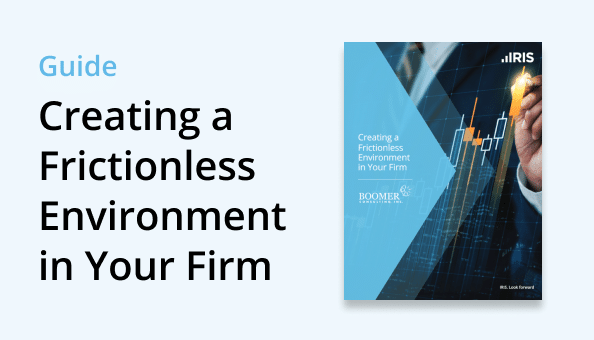BLOGS
Applying ASC 842: Calculating the Right-of-Use (ROU) Asset

One of the most significant changes for lessees when applying the new ASC 842 lease accounting standard is the recognition of right-of-use (ROU) assets and lease liabilities.
Under ASC 842, leases are to be broken down to an asset level with services and non-asset elements stripped out and treated differently from an accounting point of view.
When looking at its leases a lessee first determines whether the leases, based on five lease classification criteria, should be classified as operating or finance. Similar to the four criteria under the old guidance, but requiring greater judgment by the lessee as now they do not include explicit and unambiguous guidelines, a lease meeting any of the following five criteria is classified as a finance lease but is otherwise an operating lease:
- Ownership is transferred at the end of the lease term.
- There exists a bargain purchase option which is reasonably certain to be exercised for the leased assets.
- The lease term, which does not commence near the end of the economic life of the leased asset, is primarily for the remaining economic life of the leased asset.
- The present value of the lease payments and residual value guarantees is equal to, or more than, substantially all of the fair value of the leased asset.
- The leased asset has no alternative use to the lessor at the end of the term because of its specialized nature.
When examining any operating lease agreement a lessee must determine whether a lease exists within the scope of the new guidance. If a lease does exist then the lessee must next deduce whether there is more than one lease involved, each should be accounted for separately, and whether non-lease components are present the elements of which will need to be accounted for under other appropriate GAAP guidance. Based on ASC 842-10-15-3 and 842-10-15-4, the lessee must have direct control over the asset or be in a position to direct the manner and nature in which it is used – such control will depend on whether the lessor has “substantive substitution rights” and whether it derives a significant portion of the benefits from its ability to substitute alternative assets whilst at the same time the lessee must be able to prove that it derives most of the benefits from the use of the asset over the lease term.
Under ASC 840, lessees were able to account for operating leases as revenue items with neither the assets nor liabilities being recorded on the balance sheet. With the implementation of ASC 842, lessees will ordinarily account for their operating leases in the same fashion as finance leases and all operating leases must be recognized on the balance sheet with a lease liability and ROU asset, calculated at initial recognition as –
- The initial amount of the lease liability plus
- Any lease payments made before lease commencement plus
- Any initial direct costs less
- Any lease incentives
There are of course exceptions, but this is the guidance to follow unless the lessee elects to take advantage of a policy that allows the accounting for leases with terms shorter than 12 months to be handled as per an operating lease under ASC 840.
The ROU asset is the lessee’s right to use an asset over the contracted term of a lease (essentially the lessee is licensed by the lessor to utilize the asset as if it is their own for the term of the lease). If it is reasonably certain that the lessee will exercise an option to purchase the asset or extend the term of the lease in order to enjoy the continued use of the asset then the amortization period will begin at the commencement date and run for the useful life of the asset but generally, the amortization period for the right-of-use asset is from the lease commencement date to the end of the lease term or the end of the useful life of the asset. Its cost to the lessee as an asset is calculated as the initial amount of the lease liability, plus any lease payments made to the lessor before the lease commencement date, plus any initial direct costs incurred, minus any lease incentives received.
If during the term of the lease a right-of-use asset is determined to be impaired, the impairment is immediately recorded, thereby reducing the carrying amount of the asset. Its subsequent measurement is calculated as the carrying amount immediately after the impairment transaction, less any subsequent accumulated amortization.
Finally, at the termination of a lease, the right-of-use asset and associated lease liability are removed from the books of the lessee. The difference between the two amounts is accounted for as a profit or loss at that time.
Accounting policy election
As previously stated, ASC 842 allows lessees to elect, as an accounting policy, to treat operating leases with a lease term of 12 months at transition/lease commencement (and which does not have a purchase option that is reasonably certain of exercise) consistent with the recognition approach under ASC 840, which does not require capitalization of an ROU asset or liability on the balance sheet. Additionally, whilst ASC 842 does not provide a specific exemption for low-value assets (unlike the IFRS 16 standard), an entity is not required to apply US GAAP to immaterial items and therefore, some companies may elect to establish a capitalization threshold for which leased assets will be recorded on the balance sheet. Any leases below this threshold would not be considered material to the entity and therefore, would not be recognized. However, it is strongly advised that any entity considering developing a capitalization threshold for leases should first seek the advice of their auditors.
Otherwise, the ROU asset and its associated liability are two of the cornerstones of the financial reporting of operating leases under ASC 842. The new rules require ongoing evaluation of leases and the associated ROU assets to determine when an event occurs that may change the recognition or measurement of the asset – perhaps a change in the lease term or a modification to the existing agreement. In some instances, these changes will oblige an entity to distinguish between changes that are in essence modifications of an existing lease and those that constitute a new lease arrangement requiring separate accounting. The increased burden on the lessee does not stop there, as accounting for the assets and liabilities created by each lease is required for each period of the term.
For further information on the effects and impact of ASC 842 and for guidelines on how to comply, download IRIS Lease Accounting's 7 Step Guide to lease accounting compliance.
Disclaimer: this article contains general information about the new lease accounting standards only, and should NOT be viewed in any way as professional advice or service. The Publisher will not be responsible for any losses or damages of any kind incurred by the reader whether directly or indirectly arising from the use of the information found within this article.












